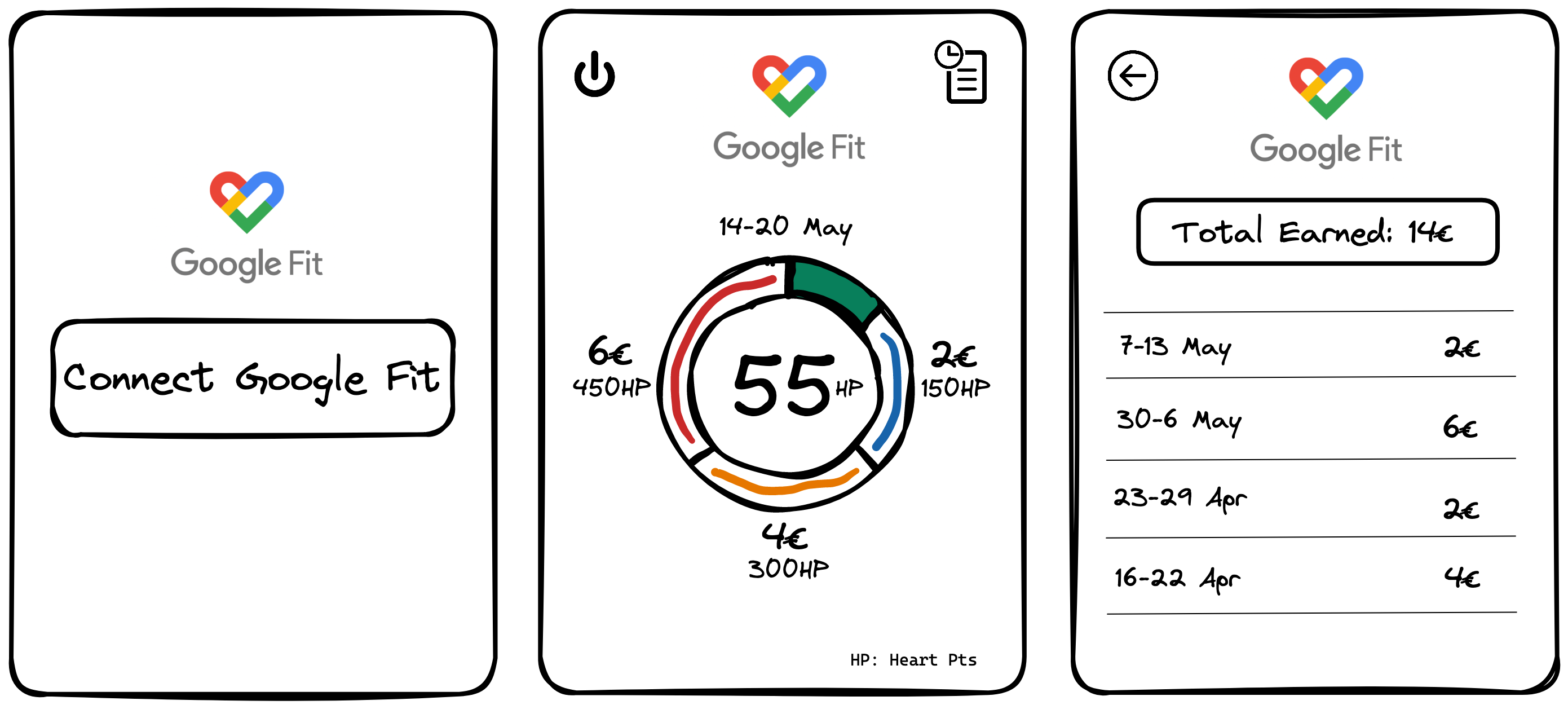A couple of years ago, while working at sheerME, our development team was given three months to create an innovative feature. My idea was to integrate sheerME with Google Fit to incentivize users to stay active by rewarding them with money in their sheerME virtual wallet.
The Concept
Google Fit tracks physical activity and awards Heart Points based on exercise intensity. According to the American Heart Association, 150 Heart Points per week is the recommended goal for maintaining a healthy lifestyle. In Google Fit:
- 1 minute of walking earns 1 Heart Point.
- 1 minute of running, swimming, etc... earns 2 Heart Points.
My proposal was simple: if users reached at least 150 Heart Points in a week, they would earn a financial reward. This would encourage users to stay active while also engaging them with the sheerME platform.
Designing the Feature
I started by creating a mockup to visualize how the feature would work. The user interface included:
- A connection screen where users could link their Google Fit account via OAuth.
- A weekly dashboard displaying:
- The current week's Heart Points.
- The different monetary reward levels.
- A progress ring indicating how close the user was to earning money.
- A history section showing past weeks' earnings.

Technical Implementation
This feature required:
- Google Fit API Integration: To retrieve Heart Points data for each user.
- OAuth Authentication: Users needed to grant sheerME access to their Google Fit data.
- Ruby on Rails Backend: To process Heart Points, calculate rewards, and update the sheerME virtual wallet.
- Frontend UI: To display the progress and history in an engaging way.
Challenges & Learnings
While the project never went live, it was a valuable experience. Some key takeaways:
- Working with Google Fit API – Understanding how to fetch and process fitness data was insightful.
- OAuth Integration – Implementing authentication for third-party APIs in a secure way.
- Product Validation – Although technically feasible, business and strategic considerations ultimately led to the project's discontinuation.
Conclusion
Even though this feature never saw production, it reinforced the importance of blending technology with user motivation. Gamifying fitness with real-world incentives could be a compelling way to encourage healthy habits. It was a fun project to work on, and I gained valuable experience in API integrations and authentication workflows.